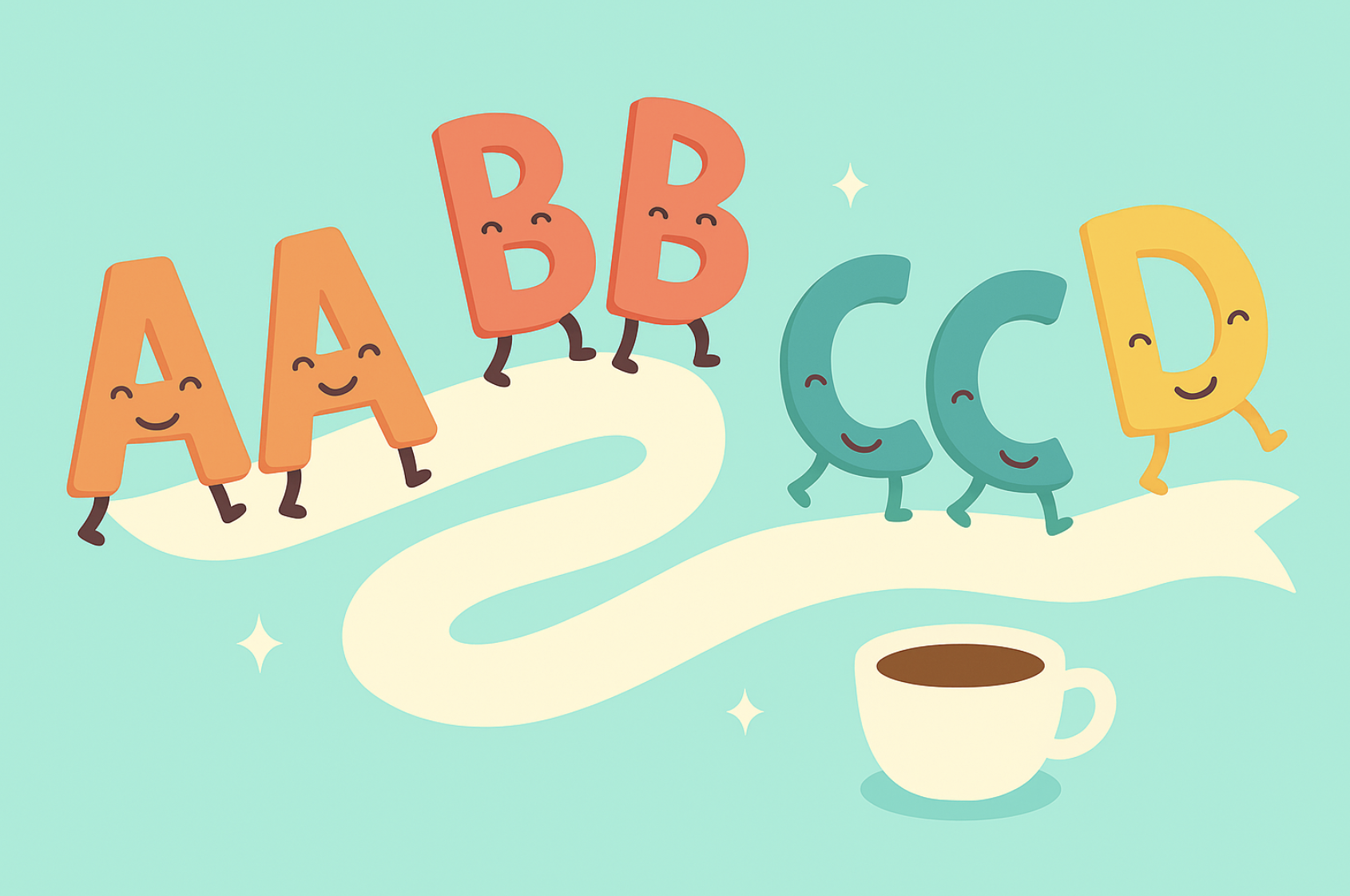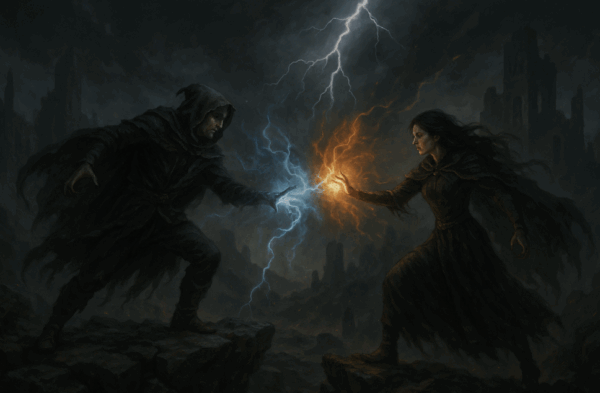Silly sentences, snappy slogans, and sweet songs, what do they all share? Alliteration.
Alliteration is the repetition of the same beginning sound in a series of words, and it’s one of the oldest tricks in the writer’s toolbox. From nursery rhymes (“Peter Piper picked a peck of pickled peppers”) to Shakespeare (“Full fathom five thy father lies”), alliteration makes language musical, memorable, and fun to read.
But what about in everyday writing? That’s where alliteration sentences come in. These aren’t just for poets or tongue twister contests, they’re useful for storytellers, students, advertisers, and anyone who wants their words to stick.
In this article, we’ll break down what alliteration is, show you examples of alliteration sentences, and share 50+ creative sentences with alliteration to inspire your own writing. By the end, you’ll see how just a sprinkle of sound repetition can turn plain prose into something powerful.
What Is Alliteration?
Alliteration is when several words in a row (or close together) start with the same sound. It’s not about the letters themselves, but the sounds. For example:
- “Big brown bears bounced bravely.”
- “Crisp cookies crumbled quickly.”
Both of these are alliteration sentences because the starting sounds repeat, giving the sentence rhythm and style.
It’s worth noting: alliteration is often confused with tongue twisters, but there’s a slight difference. Tongue twisters are playful challenges designed to trip you up (“She sells seashells by the seashore”), while alliteration can be subtle and artistic, used in poetry, stories, songs, and even ads (“Best Buy,” “Dunkin’ Donuts”).
In short, alliteration is one of the simplest ways to add musicality and memorability to your writing. Whether you’re writing a poem, a story, or just playing with words, it makes sentences sing.
Why Use It? Why Alliteration Always Attracts Attention
Alliteration might feel playful, but beneath the fun lies one of the most effective tools a writer can use. It isn’t just for tongue twisters or nursery rhymes—it’s used in speeches, literature, songs, marketing, and even everyday conversation. Here’s why it matters so much:
It Makes Writing Memorable
Repetition cements words in the brain. That’s why slogans like “Kit-Kat,” “Best Buy,” and “Coca-Cola” are so sticky. The sound repetition makes them easier to recall—and harder to forget.
Even in stories, memorable lines often rely on alliteration. Think of fairy tales: “Sleeping beauty slumbered silently” or “Snow White sang sweetly.” The pattern makes the sentences linger in memory long after reading.
It Creates Rhythm and Musicality
Alliteration brings music to language. It turns flat sentences into ones that dance across the page. Compare:
- Plain: “The river flowed quietly.”
- With alliteration: “The rushing river roared relentlessly.”
The second version doesn’t just describe the river—it feels like the river, noisy and powerful. That’s the magic of rhythm created by sound repetition.
It Highlights and Emphasizes
Alliteration naturally draws attention to repeated words. This is especially powerful in persuasive writing or speeches. Think of Martin Luther King Jr.’s famous line: “I have a dream that one day on the red hills of Georgia, the sons of former slaves and the sons of former slave owners…” While not pure alliteration, the repetition of sound and rhythm reinforces the message and makes it unforgettable.
Writers can use this trick to emphasize themes, ideas, or moods:
- “Persistent problems plague progress.”
- “Silent storms sweep silently.”
The focus falls directly on the words you want the reader to notice.
It Builds Mood and Atmosphere
The choice of repeated sound influences how a sentence feels:
- Soft sounds (s, l, m): calming, lyrical, flowing → “Soft summer sunlight streamed slowly.”
- Harsh sounds (k, t, p, b): sharp, energetic, powerful → “Bold battles broke boundaries.”
By carefully picking which letter to repeat, you can guide the reader’s emotional response.
It Adds Playfulness and Style
Alliteration injects creativity into even the simplest sentences. It makes language fun. Children’s authors love it—Dr. Seuss filled his books with lines like: “Bartholomew Cubbins could not count his hats.” But it’s not just for kids. Poets, novelists, and even songwriters use it to keep readers entertained.
It Works Across Contexts
The beauty of alliteration is that it’s universal. You’ll find it in:
- Poetry: “From forth the fatal loins of these two foes” (Shakespeare).
- Music: “Shake it, shake it, sugar” (Ray Charles).
- Speeches: Politicians lean on sound repetition to make key points stick.
- Marketing: Brands and ads use it to stay memorable.
Bottom line: Alliteration isn’t just decoration—it’s strategy. It makes language stick, sound better, and feel more alive. Whether you’re writing a poem, pitching a product, or crafting a sentence for fun, alliteration gives your words that extra sparkle.
Your Publishing Journey Awaits – Start NowHow to Write Alliteration Sentences
Writing sentences with alliteration might look tricky at first, but once you know the process, it’s surprisingly fun. Think of it like a word game: pick a sound and see how many words you can string together. Here’s a simple guide:
Pick a Sound (or Letter)
Start with a single letter or sound you want to repeat. It can be a soft sound like “s” or a punchy sound like “b.”
Example: Choose the letter “s.”
Brainstorm Words with That Sound
Make a quick list of words starting with your chosen sound. Don’t overthink it—just jot down what comes to mind.
For “s”: sun, soft, silence, slowly, shine, sweet, summer.
Arrange the Words into a Sentence
Now connect a few of those words into a short sentence. Try to keep it natural—too much repetition can sound forced.
- “The summer sun shone softly.”
- “She slowly sipped sweet soda.”
Balance Clarity and Creativity
Alliteration works best when it feels smooth, not cluttered. Avoid cramming too many words in just for the sake of it.
Overloaded: “Silly, sneaky, super, shiny, sparkly squirrels swiftly scampered.” (fun, but overwhelming).
Balanced: “Silly squirrels scampered swiftly.” (still catchy, but easier to read).
Match the Sound to the Mood
- Soft sounds (s, l, m, w) create a calming or lyrical effect.
- Harsh sounds (b, p, k, d, t) create drama, strength, or energy.
- “Lively lilies lay lazily in the lake.” (gentle and calm).
- “Bold battles broke boundaries.” (strong and intense).v
That’s it! With just a letter, a list, and a little imagination, you can create endless alliteration sentences for poems, stories, slogans, or just for fun.
50+ Alliteration Sentences to Inspire Your Writing
Sometimes the best way to understand alliteration is simply to see it in action. Below are over 50 examples of alliteration sentences, grouped into categories so you can find the ones that fit your mood, style, or writing project.
Everyday Alliteration Sentences
Simple, lighthearted sentences you could use in daily writing or playful practice.
1. Peter picked a peck of pickled peppers.
2. Lazy lions lounge in the sun.
3. Friendly frogs frolic freely.
4. Tiny turtles trot timidly.
5. Busy bees buzzed by.
6. Fast fish flip and flop.
7. Hungry horses hurry home.
8. Dancing dogs dig ditches.
9. Clever cats climb carefully.
10. Perfect pancakes piled proudly.
Nature-Inspired Alliteration Sentences
Alliteration is great for painting vivid pictures of the natural world.
11. Whistling winds whipped wildly.
12. Silent streams shimmer softly.
13. Fierce flames flickered fast.
14. Glistening grass grew green.
15. Bold birds beat big blue skies.
16. Stormy seas surged strongly.
17. Golden geese glide gracefully.
18. Whispering willows waved wildly.
19. Bright blossoms bloomed beautifully.
20. Wild wolves wandered wearily.
Fun & Creative Alliteration Sentences
Playful sentences that sound like tongue twisters.
21. Silly snakes slither silently.
22. Fred’s friends fried fresh fish.
23. Tiny tigers tiptoed through tulips.
24. Curious kittens chased colorful kites.
25. Playful penguins painted purple pumpkins.
26. Seven silly sisters sang songs.
27. Jolly jugglers juggled juicy jellybeans.
28. Giggling girls gathered green grapes.
29. Brave bats battled boldly.
30. Ten tiny toads tap-danced together.
Strong Descriptive Alliteration Sentences
These add power and emotion—perfect for essays, stories, or speeches.
31. Dark days drag drearily.
32. Persistent problems plague progress.
33. Fearless fighters forge forward.
34. Mighty mountains meet mist.
35. Harsh hands held hope.
36. Bold battles broke boundaries.
37. Silent storms swept suddenly.
38. Broken bridges block bravery.
39. Fragile flowers fought frost.
40. Bright beginnings banish bitterness.
Literary & Poetic Alliteration Sentences
More artistic examples that echo what you might see in poems or stories.
41. Whispering waves washed white walls.
42. Scarlet skies stretched silently.
43. Gentle giants guarded gardens.
44. Patient poets painted pictures.
45. Shadows shifted silently, shaping stories.
46. Flames flickered, feeding fear.
47. Lonely lanterns lit long lanes.
48. Silver stars sparkled softly.
49. Daring dreamers danced daily.
50. Eternal echoes ended everything.
These examples show that alliteration isn’t limited to children’s rhymes; it works for fun, description, mood, and style. Once you get started, you’ll see opportunities for it everywhere in your writing
Famous Alliteration Examples in Literature & Media
Alliteration isn’t just a playground for tongue twisters or practice sentences—it’s been a favorite tool of poets, storytellers, and advertisers for centuries. When used well, it creates rhythm, draws attention, and makes words unforgettable. Here are some standout examples:
In Literature
- Shakespeare: “Full fathom five thy father lies” (The Tempest) — the repeated f sound mimics the rolling of waves.
- Edgar Allan Poe: “Deep into that darkness peering, long I stood there wondering, fearing” (The Raven) — the d and l sounds build tension and atmosphere.
- Beowulf (Old English epic): “Heorot trembled, wonderfully built to withstand the blows, the struggling great bodies beating at its beautiful walls” — early English poetry leaned heavily on alliteration for structure and drama.
In Nursery Rhymes & Children’s Stories
- “She sells seashells by the seashore.”
- “Baa, baa, black sheep.”
- “Twinkle, twinkle, little star.”
Kids love rhythm, and alliteration makes stories musical and easier to remember.
In Advertising & Branding
- Coca-Cola
- Dunkin’ Donuts
- Best Buy
- PayPal
Brands know that repeated sounds stick in your head. Short, snappy, alliterative names are harder to forget.
In Pop Culture & Media
- Comic Book Characters: Peter Parker, Lois Lane, Bruce Banner, Clark Kent — creators used alliteration to make names catchy and memorable.
- Songs: Ray Charles’s “Shake it, shake it, sugar” or Taylor Swift’s “Band-Aids don’t fix bullet holes” — repeated sounds make lyrics stick.
Let Your Sentences Shine with Alliteration
Alliteration is one of the simplest ways to add rhythm, emphasis, and memorability to your writing. From playful practice sentences to powerful literary lines, it proves that repeating sounds can have a big impact. Use it sparingly, match it to your message, and your words will flow with style.
So next time you sit down to write, try sprinkling in a little alliteration, you’ll be surprised at how much sparkle it gives your sentences.
FAQ: Alliteration Sentences
Q: What are some alliteration sentences?
Alliteration sentences are those in which most of the words begin with the same sound, creating a sense of rhythm and flow. A classic example is the nursery rhyme line, “Peter Piper picked a peck of pickled peppers.” Another easy one is, “Lazy lions lounge in the sun.” Both use repeated beginning sounds to make the sentence fun, memorable, and more musical. Even a simple phrase like “Whistling winds whipped wildly” demonstrates how repetition of the same sound can make a sentence far more engaging than if it were written in plain, non-alliterative form.
Q: How do you make sentences using alliteration?
Creating sentences with alliteration is less complicated than it seems. The first step is to choose a letter or sound that you want to repeat, such as s, b, or p. Once you’ve chosen, brainstorm a handful of words that begin with that sound. After that, the goal is to fit those words together into a natural, meaningful sentence. For example, if you choose the letter s, you might come up with “silly,” “snakes,” “slither,” and “silently.” Put them together and you have, “Silly snakes slither silently.” The key is to balance repetition with clarity. If you cram too many words together just for the sake of it, the sentence can feel forced or confusing. But with the right mix, your sentence will sound smooth and satisfying.
Q: What are some examples of alliteration sentences in everyday writing?
Alliteration isn’t only for poetry and tongue twisters—it can show up in everyday sentences too. Consider the phrase, “Busy bees buzzed by.” It’s short, simple, and instantly paints a picture, while the repeated b sound makes it stick in your mind. Another example could be, “Calm clouds covered the coast,” which uses the c sound to create a gentle, almost soothing rhythm that matches the imagery. Or you might use something a bit stronger, like “Brave birds boldly broke barriers,” which gives a sense of energy and determination. These examples show that alliteration can be playful or powerful, depending on the words you choose, and it works just as well in casual writing as it does in creative projects.
Q: Are alliteration sentences the same as tongue twisters?
While alliteration and tongue twisters are closely related, they aren’t exactly the same. Alliteration is simply the repetition of the same initial sound in nearby words, and it can be subtle, gentle, or dramatic, depending on the effect you want. Tongue twisters, on the other hand, are designed specifically to be challenging to say aloud. For instance, “She sells seashells by the seashore” is a famous tongue twister, but it’s also an example of alliteration. The main difference lies in purpose: alliteration can be used anywhere—in stories, poems, essays, or even brand names—to add style and memorability, while tongue twisters exist mostly for fun and wordplay. So, every tongue twister is an example of alliteration, but not every alliteration sentence is a tongue twister.
Q: Can you use alliteration in essays or formal writing?
Yes, you can absolutely use alliteration in essays or formal writing, though it should be done carefully and in moderation. Alliteration can be a powerful tool for emphasis, helping a key phrase stand out in the reader’s mind. For example, in a persuasive essay, a sentence like “Persistent problems plague progress” has more punch than simply writing “Problems slow progress.” The repeated p sound draws attention to the idea and makes it more memorable. That said, you don’t want your essay to read like a tongue twister—it’s best to use alliteration sparingly, almost like seasoning in cooking. A little bit makes your writing more engaging and polished, but too much can distract from your argument or come across as unprofessional.







